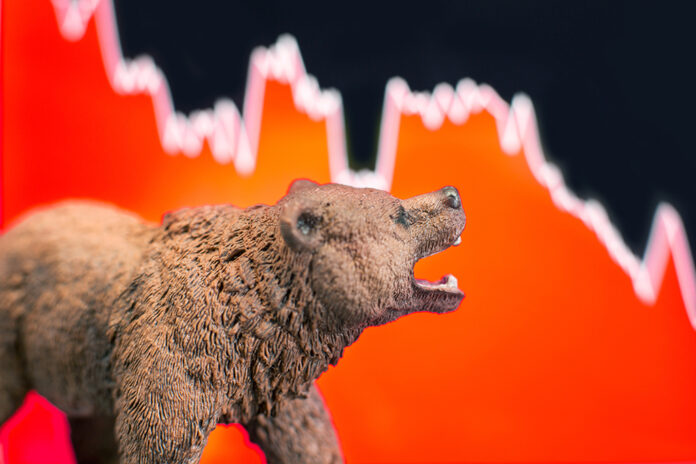John Del Vecchio manages short-only portfolios and serves as a principal and portfolio manager for Ranger Alternative Management LP (“Ranger”), which sub-advises the Ranger Equity Bear ETF (HDGE). He also serves as president and founder of Parabolix Research Inc., a quantitative research firm. He has written three books on investing including What’s Behind the Numbers? (McGraw-Hill) a best seller and Stock Trader Almanac Book of the Year for 2013.
Russ Alan Prince: You specialize as a bear market fund manager. How do you view this market environment compared to previous cycles?
John Del Vecchio: My interest in shorting the market started in 2000. I cut my teeth with a prominent forensic accounting research firm, and I could see from a mile away the most vulnerable companies would be technology oriented. So, I left research and went into money management to focus on shorting technology stocks.
There was a lot of meat on the bone. The downside was 90 to 100% for a lot of stocks. By the time the market bottomed out in late-2002, that strategy had worked fabulously.
While the indexes took it on the chin, the decline in technology stocks drove the damage. There was a stealth bull market in plenty of sectors.
I went back into research and poked my head up again in 2007. This time my focus was more on financial firms with a smattering of technology stocks. There was a considerable downside to firms exposed to California, Nevada and Florida.
I had been tracking mortgage equity withdrawals. I could see when folks were tapped out from taking equity out of their homes to finance Cadillac Escalades and the newest set of Callaway golf clubs.
The 2008 bear market was broader than in 2002, so there was more damage across different market sectors.
Today, we face the “everything” bear market. Artificially low-interest rates caused speculators to bid assets up to levels that don’t make sense. In 2022, we saw the most speculative stocks get hit the hardest. The rally in January has been typical of a bear market rally. Low-quality stocks go up the most. The rally lulls you into a sense of complacency, only to pick your pocket in the end.
Everything is vulnerable now. The downside is substantial. The increase in rates off of zero is historic. You’re earning about the same on a T-bill as on the forward earnings yield of the S&P 500.
That should cause a few sleepless nights.
Prince: Capturing bear alpha is challenging. What can our audience consider to protect their equity exposure?
Del Vecchio: The benefits of active management on the short side are tremendous. If you simply short the S&P 500 via an inverse fund, you’re shorting the best and worst companies. Do you want to short Apple, Microsoft, Exxon and Proctor & Gamble? Maybe.
But you may want to focus on companies with bloated balance sheets, poor earnings quality, weak cash flows and aggressive accounting. You can only obtain that exposure through active management.
You also get a little extra juice because the companies with a lot of hair on them tend to have higher betas. So, when the market is under pressure, you have a decent chance of capturing more downside performance. If you’re short the index, you’re not only shorting the best companies but cannot outperform on the downside due to the cost involved.
I have developed a model called The Forensic Accounting Stock Tracker—FAST—that pinpoints where companies are using accounting to their advantage. Combining that with stocks already coming under pressure provides a nice list to work from. Instead of searching for a needle in a haystack, FAST provides a way to separate the wheat from the chaff.
In short timeframes or when there are market distortions, it becomes more challenging to consistently generate the alpha you asked about. Anything can happen over a few months or a year. Over time though, those engaging in shenanigans get exposed. Those distortions are coming to an end. Normalized interest rates are about to expose the companies swimming naked.
Index weighting is not a consideration for FAST, so if Apple and Exxon are holding up well, there can be plenty of opportunity to capture alpha underneath the massive positions in the S&P 500. This is true when companies have an earnings-driven event like missing quarterly estimates.
Prince: Bear markets don’t last forever, although what’s your overall long-term outlook, and does it make sense to always maintain a portfolio hedge?
Del Vecchio: Markets change. The stocks that dominate the markets change. Human nature never changes. There will always be bear markets. How nasty they are will depend on the lead-up until the market turns over. Again, this latest one will be the “everything” bear market due to distortions over the past 10+ years in interest rates.
I think the market will not bottom out until the dividend yield on the S&P 500 is competitive with other rates. If the S&P 500 has a 30% downside, many stocks will be down 70% or more. You could either use hedges tactically, such as when technical indicators, valuations, or whatever metrics you use to suggest that the market is vulnerable, you put on hedges. On the other hand, you could maintain a constant hedge and rebalance it periodically. The key is to rebalance.
It will be after the fact that people will know if there’s been a painful bear market. It’s up to the advisor. It’s most important to have a strategy and stick with it through thick and thin. If you’re tactical at one point, then decide to maintain a hedge no matter what, and you’re back and forth, you’ll end up nowhere.
Be consistent.
Russ Alan Prince is the executive director of Private Wealth magazine and chief content officer for High-Net-Worth Genius. He consults with family offices, the wealthy, fast-tracking entrepreneurs and select professionals.


